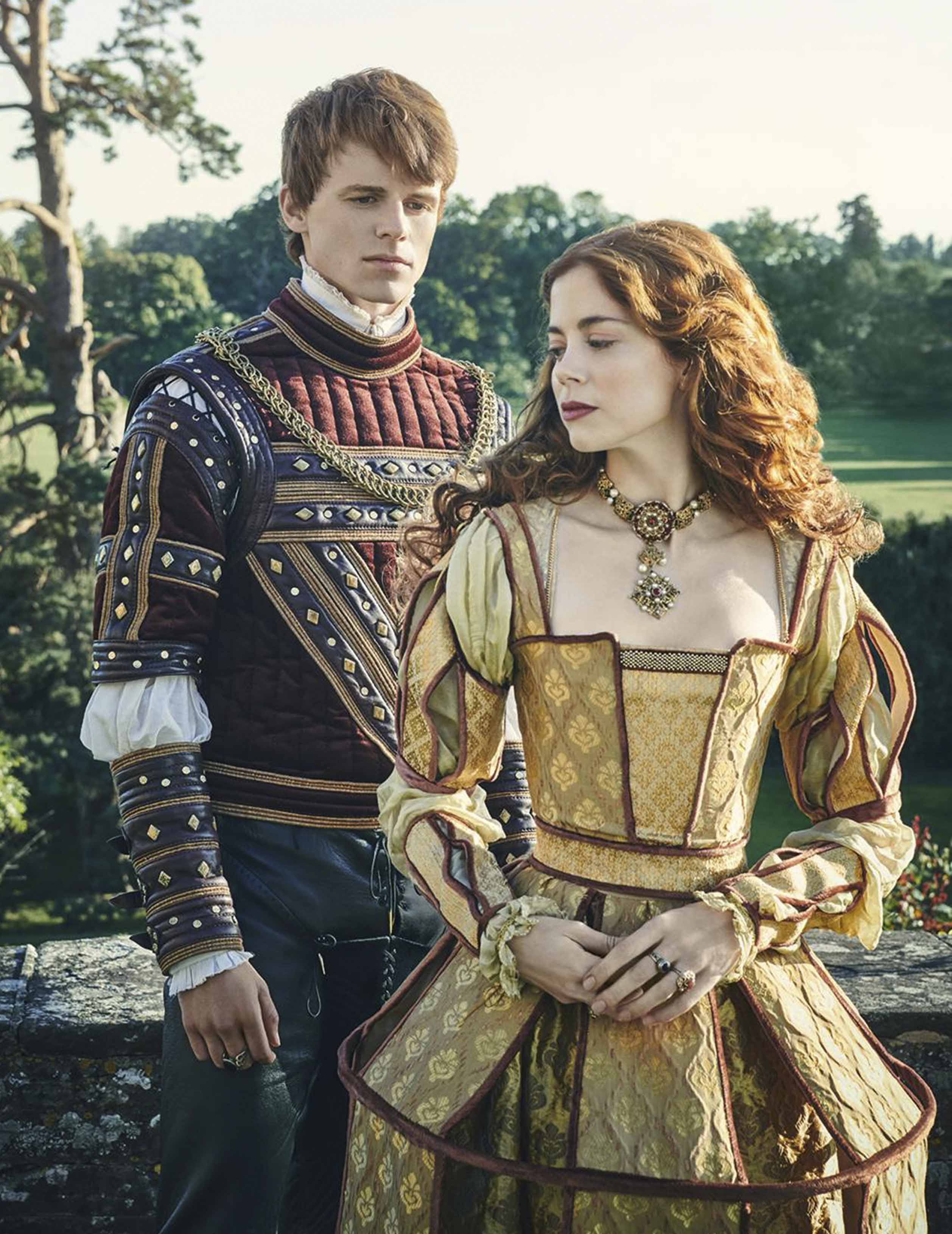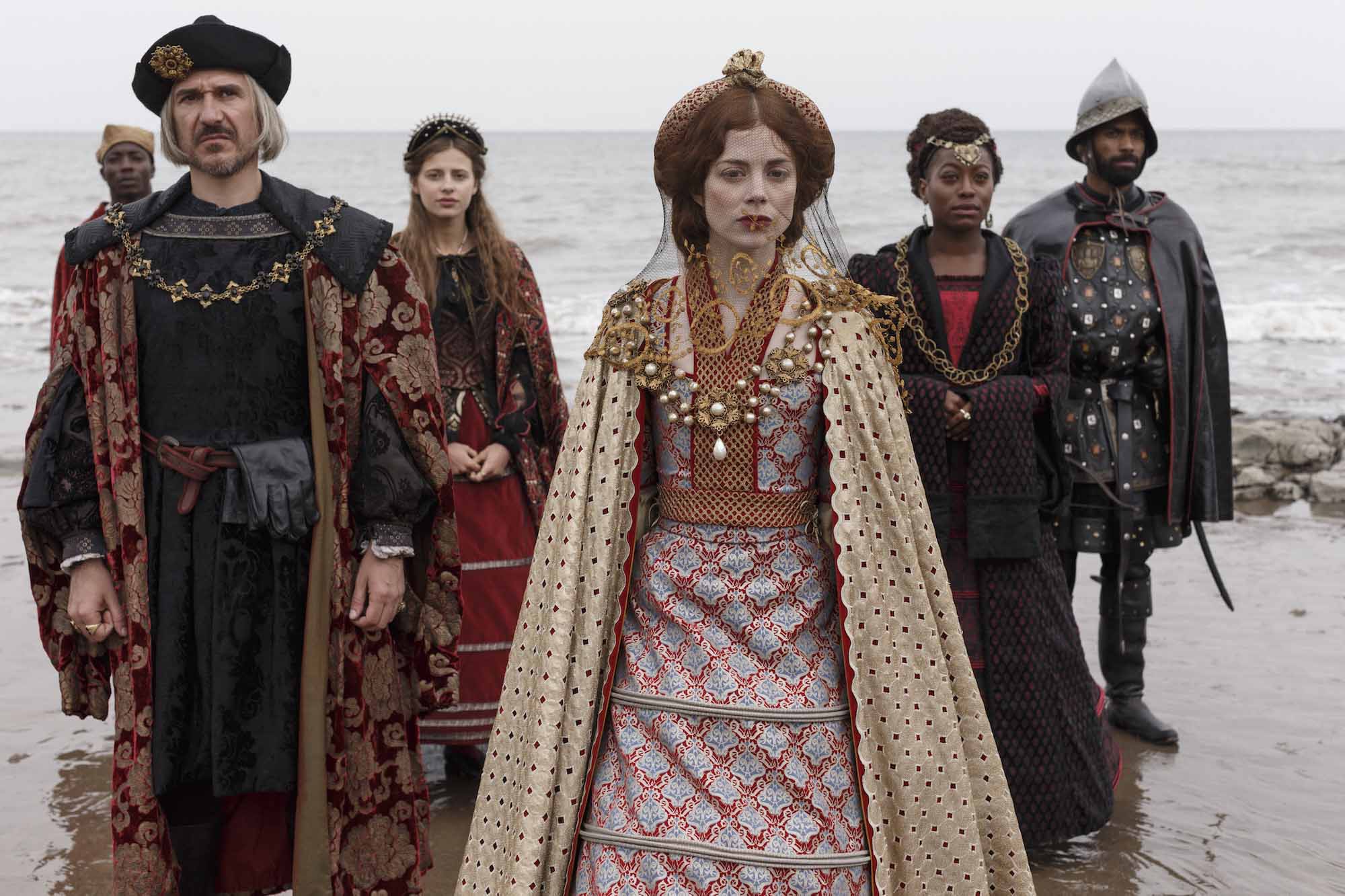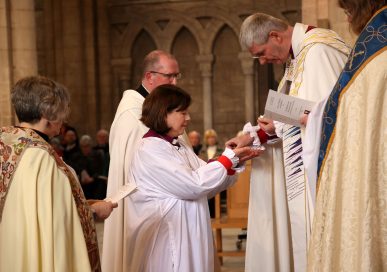Uneasy is the Head…
Of all the historical characters associated with Peterborough Cathedral, Katharine of Aragon – the first of Henry VIII’s six wives – is undoubtedly the most fascinating. Her tomb in the city’s Cathedral is an essential stop for visitors, especially during January’s festival dedicated to her memory…

on Amazon. Katherine and Henry VIII are portrayed by Charlotte Hope and Ruairi O’Connor.
Katharine of Aragon was an incredible woman, and arguably the most worthy out of all six of Henry’s wives. She suffered the death of a husband, the death of several of her children, and she was one of the first women to go through a divorce in England. She remained strong throughout her hardships, and contrary to the ladies who followed her position as Queen, she survived to 51… that’s a 16 year longer than average life expectancy during Tudor times. Buried in nearby Peterborough Cathedral in
January 1536, each year around the day of her death, the Cathedral celebrates her life. Katharine was born in December 1485 at Alcalá de Henares in Spain, daughter of King Ferdinand II and Queen Isabella. Today Alcalá de Henares is Peterborough’s Spanish twin town to celebrate this historic association.
Katharine came to England to marry Prince Arthur, the eldest son and heir of Henry VII, in November 1501. This was part of a diplomatic settlement between the countries.
He died in 1502 after six months of marriage, and Katharine swore throughout her life that the marriage had never been consummated. Katharine’s status remained uncertain, although she was appointed as the Spanish ambassador to the English court in 1507, the first woman in European history to be given such a role. After succeeding his father to the throne, Henry VIII married Katharine in June 1509. Henry seems to have married his brother’s widow through some genuine affection rather than for dynastic reasons.
Sadly Katharine was unable to produce a living male heir – something Henry regarded as essential for the continuation of his dynasty – giving birth instead to six children with only one of them, Queen Mary I, surviving infancy. For much of their marriage, the relationship seems to have been good; Katharine was married to Henry VIII for longer than all of his other five marriages put together.
She was left as Regent in his absence whilst he was away fighting in France in 1513, during which her forces defeated an attempted invasion by the Scots. As was common royal practice, Henry took a series of mistresses and produced several illegitimate children. However, when Anne Boleyn arrived at the court, Henry became absolutely besotted with her.
She refused to become a mistress and Henry realised he could only have the woman he loved, and a possible male heir by her, if his marriage to Katharine was annulled. In 1527 Henry asked Pope Clement to annul the marriage, but the Pope refused. The failure to get the annulment caused Henry to sack his chief minister, Cardinal Wolsey in 1530. Wolsey headed north, and spent Easter at Peterborough Abbey – now Cathedral – while he was en route.
In 1532 Henry was proclaimed the Supreme head of the Church in England. In 1533 Katharine’s marriage to Henry was proclaimed invalid on the grounds that it was against canon law because of her previous marriage to his brother.
Katharine was now referred to as the Dowager Princess of Wales and exiled to More Manor in Hertfordshire, Buckden Towers in Cambridgeshire and latterly to Kimbolton Castle, south of Peterborough.
Katharine died at Kimbolton in January 1536, most likely of cancer. Before she died, she sent a letter to her ex-husband, stating ‘Lastly, I make this vow, that mine eyes desire you above all things. Farewell.’
She was ordered by Henry to be buried at Peterborough Abbey deemed the nearest great religious house that befitted her status, whilst not giving her a burial in London since this may have been seen as politically ‘embarrassing.’
The funeral cortege, which left shortly after her death included a coffin wagon covered with black velvet – as were the six horses pulling it – heralds and fifty servants in black carrying torches, four banners in crimson taffeta and four golden standards.
At the door of the abbey church, the body was received by four bishops and six abbots, and placed under a canopy lit by a thousand candles. She has been buried there ever since, but even her tombstone suffered hardships. Katharine’s tomb of gilded black marble was vandalised by Oliver Cromwell’s troops in April 1643, and the black marble was removed in the 1700s for lining the floor of the Dean’s summerhouse.
The current memorial slab was installed in 1895 after a national campaign for the Katharines of England to all donate a penny to the cause, organised by the wife of one of the Cathedral canons, Katharine Clayton. Today Katharine is remembered annually by a commemorative service and series of events at the Cathedral. Visitors place pomegranates on her tombstone every year; her royal symbol.
Queen on the Small Screen
The story of Katherine of Aragon is brought to live in The Spanish Princess, the drama series about Katherine’s life before marrying Henry VIII. The first series is available to stream now, whilst a new series is airing as Pride goes to press. The first eight episodes centre on Katherine of Aragon, the beautiful teenage princess of Spain who has been promised the English throne since she was a child. She arrives in a grey, rain-lashed England with her glorious and diverse court including her lady-in-waiting Lina – an African Moor. Katherine is Princess of Wales now, but when her husband Prince Arthur dies suddenly, her line to the throne seems lost… until she claims her marriage was never consummated and that as a virgin she may set her sights on the new heir – the charismatic and headstrong Prince Harry – who will one day rule as King Henry VIII. Series two sees the more mature Katherine in peril as The Great Plague ravages London and Henry’s court descends into anger, affecting the King’s mental health and endangering Katherine herself.
The Spanish Princess is now available on Amazon Prime, see www.amazon.co.uk.







